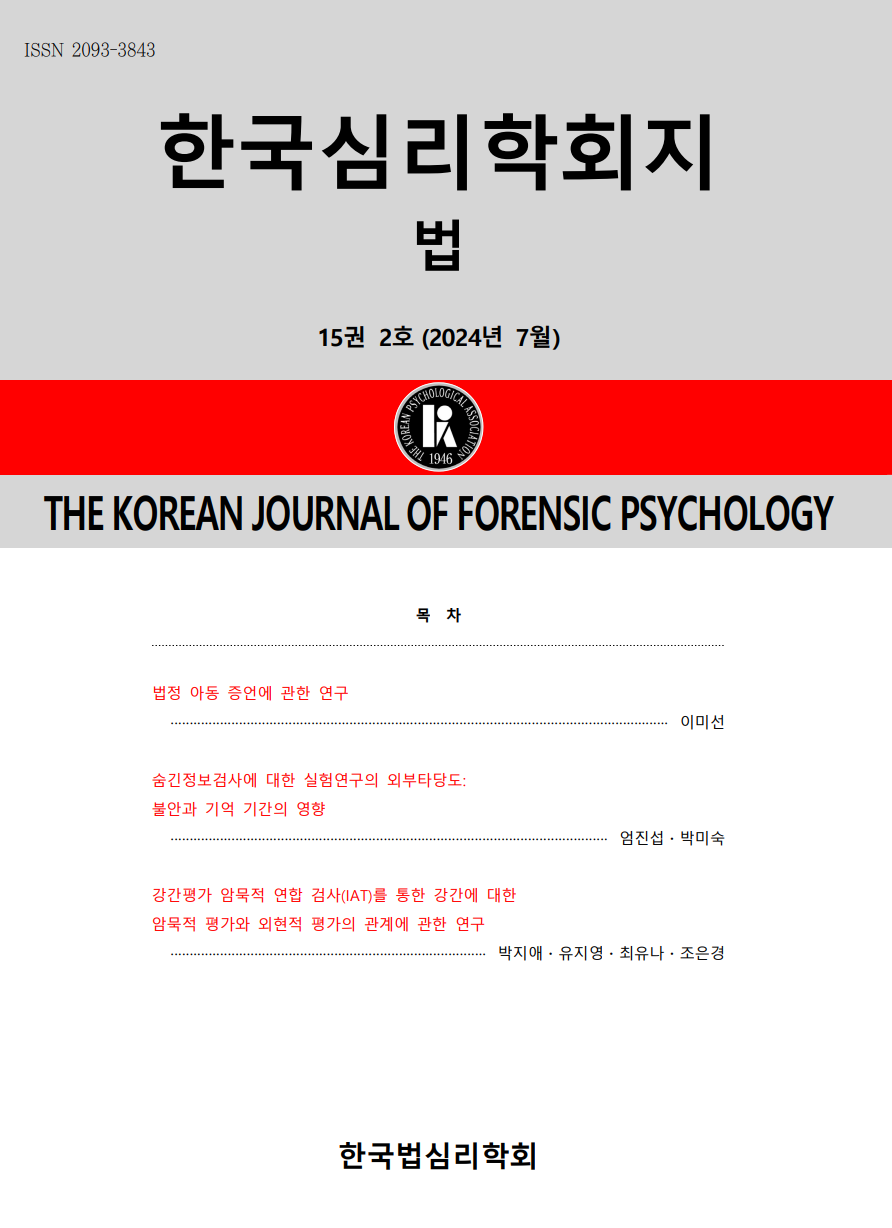 ISSN : 2093-3843
ISSN : 2093-3843
The aim of the present study is to add to our growing understanding of crime committed by the mentally ill, especially offenders with schizophrenia, to provide insight into difference between offenders with and without mental disorder, and eventually to prevent crime committed by the mentally ill. Based on the previous research and through case studies, the present study investigated offense behaviors and characteristics of the offenders with schizophrenia at the time of offense. In addition, based on official statistics on the previous convictions of the offenders, the present study examined the risk of reoffense by the mentally ill. As a result, two thirds of offenders who have mental disorder had previous convictions, and the rate of offenders who had committed crimes more than five times before has increased over the years. In terms of offender-victim relationship, relatives of offenders are at a greater risk for victimization by the mentally ill. In conclusion, there exists considerable differences between offenders with and without mental disorder in terms of their offense behavior, background characteristics, and selection of victim. More research on the crime-scene behaviors of the offenders with schizophrenia and the evaluation of victim risk is needed.
Korean supreme court’s reliability standards for eyewitness testimony have not fully reflected researches of social science. Now, it is time for our practitioner and theorists to make efforts to suggest detailed alternative resolutions, as to the issues of accuracy of eyewitness testimony. Basically, inaccurate eyewitness identification arises from both a systematic cause of improperly composing a process and a non-systematic cause of limits of a human memory. Currently, korean supreme court’s discretion to determine reliability of eyewitness testimony seems to go to the level of excessiveness. Most of all, the court’s standards do not have criteria for considerations of substantial and other factors. Korean supreme court made confused reasoning of reliability issues regarding eyewitness testimony evidences and other general evidences. It is not accidental that the court has tried to make up for damaged reliability of eyewitness testimony by raising other evidence unrelated to eyewitness evidence. To cope with these problems, we need to introduce the system of inadmissibility of eyewitness identificaton evidence, if not other special circumstances or evidence pointed to another direction. To make it possible, the comprehensive standards should be drafted for a guidance of policemen, prosecutors, and courts.
Internet has a lot of positive and negative effects, nevertheless, it shares something in common and that is when you get into using the internet, it is so incredibly addictive that you cannot come out of it, causing loneliness and stress potentially. Even though internet addiction is described as interesting and important for public internet users and its effects of potentially problems, there is lack of data regarding cyber-sexual addiction among university students that is a subordinate position in internet addiction. This research was conducted to study the prevalence of cyber-sexual addiction among university students and to test the mediation effect of loneliness and stress between them. Questionnaires were administered to 341 university students and CAI(Young,2001), RULS(Russell et al., 1980), BEPSI-K(Bae et al., 1992) were used to measure them. The result shows that cyber-sexual addiction tendency and loneliness are more strongly related in male students than female students; on the other hands, female students reported higher stress index than male students. And loneliness and stress have positive correlation with cyber-sex respectively. And also loneliness showed that perfect mediated influence of stress affects cyber-sex addiction.